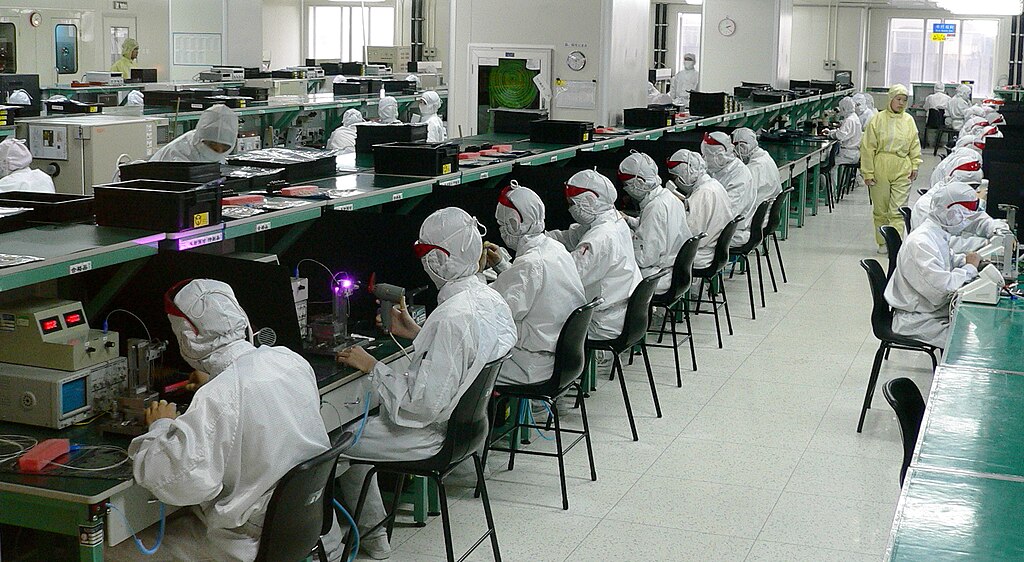China’s manufacturing sector expanded more than expected in March, supported by Beijing’s aggressive stimulus efforts. The official Manufacturing Purchasing Managers Index (PMI) rose to 50.5, slightly above forecasts of 50.4 and up from 50.2 in February, indicating modest growth in factory activity.
The stronger PMI reading reflects the early impact of China’s recent economic stimulus measures, which aim to boost domestic demand and support private businesses. These include increased fiscal spending and initiatives to drive consumption, helping offset lingering economic pressures.
Non-manufacturing activity also improved, with the services PMI climbing to 50.8 in March from 50.4 a month earlier, beating expectations of 50.5. The uptick in both manufacturing and services pushed the Composite PMI to 51.4 from February’s 51.1, signaling broad-based growth across the economy.
The March data comes after Beijing unveiled its most ambitious stimulus package to date, set to roll out through late 2024. Key areas of focus include infrastructure investment, tech innovation—particularly in artificial intelligence—and measures to stabilize consumer confidence.
Rising business activity in sectors such as AI also contributed to the improved figures. However, China’s outlook remains cautious as tensions with the U.S. grow. Earlier this month, President Donald Trump imposed a 20% tariff on Chinese goods and suggested further trade restrictions could follow, raising concerns over a potential trade war.
Despite external challenges, the March PMI data suggests that China’s economic recovery is gaining traction, driven by policy support and a rebound in consumer and business sentiment. Analysts are watching closely to see if momentum can be sustained amid global uncertainties.



 Spain’s Industrial Output Records Steady Growth in October Amid Revised September Figures
Spain’s Industrial Output Records Steady Growth in October Amid Revised September Figures  Asian Currencies Steady as Rupee Hits Record Low Amid Fed Rate Cut Bets
Asian Currencies Steady as Rupee Hits Record Low Amid Fed Rate Cut Bets  Asia’s IPO Market Set for Strong Growth as China and India Drive Investor Diversification
Asia’s IPO Market Set for Strong Growth as China and India Drive Investor Diversification  Citi Sets Bullish 2026 Target for STOXX 600 as Fiscal Support and Monetary Easing Boost Outlook
Citi Sets Bullish 2026 Target for STOXX 600 as Fiscal Support and Monetary Easing Boost Outlook  Germany’s Economic Recovery Slows as Trade Tensions and Rising Costs Weigh on Growth
Germany’s Economic Recovery Slows as Trade Tensions and Rising Costs Weigh on Growth  BOJ Faces Pressure for Clarity, but Neutral Rate Estimates Likely to Stay Vague
BOJ Faces Pressure for Clarity, but Neutral Rate Estimates Likely to Stay Vague  Gold Prices Steady as Markets Await Key U.S. Data and Expected Fed Rate Cut
Gold Prices Steady as Markets Await Key U.S. Data and Expected Fed Rate Cut  U.S. Futures Steady as Rate-Cut Bets Rise on Soft Labor Data
U.S. Futures Steady as Rate-Cut Bets Rise on Soft Labor Data  European Stocks Rise as Markets Await Key U.S. Inflation Data
European Stocks Rise as Markets Await Key U.S. Inflation Data  Gold Prices Edge Higher as Markets Await Key U.S. PCE Inflation Data
Gold Prices Edge Higher as Markets Await Key U.S. PCE Inflation Data  Asian Currencies Edge Higher as Markets Look to Fed Rate Cut; Rupee Steadies Near Record Lows
Asian Currencies Edge Higher as Markets Look to Fed Rate Cut; Rupee Steadies Near Record Lows  Asian Markets Mixed as RBI Cuts Rates and BOJ Signals Possible Hike
Asian Markets Mixed as RBI Cuts Rates and BOJ Signals Possible Hike  China’s Services Sector Posts Slowest Growth in Five Months as Demand Softens
China’s Services Sector Posts Slowest Growth in Five Months as Demand Softens  Europe Confronts Rising Competitive Pressure as China Accelerates Export-Led Growth
Europe Confronts Rising Competitive Pressure as China Accelerates Export-Led Growth  Dollar Holds Steady as Markets Shift Focus to 2026 Rate Cut Expectations
Dollar Holds Steady as Markets Shift Focus to 2026 Rate Cut Expectations  Japan’s Nikkei Drops as Markets Await Key U.S. Inflation Data
Japan’s Nikkei Drops as Markets Await Key U.S. Inflation Data 































